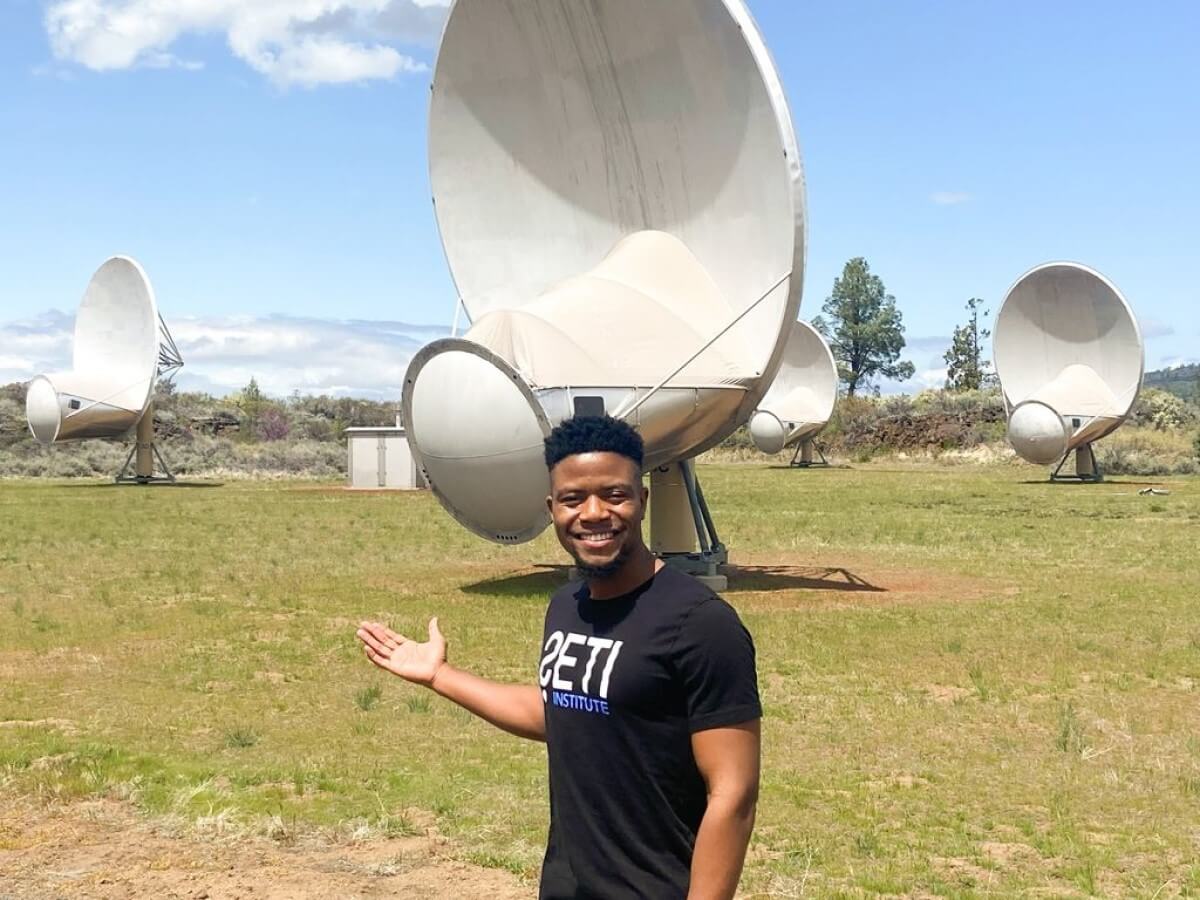MOUNTAIN VIEW, Calif. — Astronomers often focus on their search for alien life throughout the cosmos — but what about an alien’s search for us? A new study explains how Earth’s growing radio presence in space could soon make humans very detectable to extraterrestrials looking for their own version of “little green men.”
While scientists say the Earth’s current levels of radio traffic may be too weak for a civilization like our own to detect out in space, a team of researchers from Mauritius and Manchester Universities believe there’s a chance more advanced alien cultures could spot signals broadcasting from Earth light years away.
To test this theory, the team simulated radio leakage from mobile towers to see what was detectable from nearby stars, including Barnard’s star, which is just six light years away from Earth. Ramiro Saide, currently an intern at the SETI Institute’s Hat Creek Radio Observatory, suggests that civilizations out in space (if they exist) likely have receiving systems that are much more sensitive than scientists on Earth have at the moment. This would make it possible for high-tech aliens to detect our growing use of mobile systems and more powerful broadband technology.
Humans are broadcasting out into space across the planet
The researchers note that Earth’s mobile radio signature now includes traffic coming from some previously unlikely sources, including developing countries in Africa.
“The results highlight Africa’s success in bypassing the landline stage of development and moving directly into the digital age,” says team leader Professor Mike Garrett from the University of Manchester’s Jodrell Bank Centre for Astrophysics.
“I’ve heard many colleagues suggest that the Earth has become increasingly radio quiet in recent years – a claim that I always contested – although it’s true we have fewer powerful TV and radio transmitters today, the proliferation of mobile communication systems around the world is profound. While each system represents relatively low radio powers individually, the integrated spectrum of billions of these devices is substantial.”
“Every day we learn more about the characteristics of exoplanets via space missions like Kepler and TESS, with further insights from the JWST – I believe that there’s every chance advanced civilizations are out there, and some may be capable of observing the human-made radio leakage coming from planet Earth,” adds Dr. Nalini Heeralall-Issur, Saide’s supervisor at the University of Mauritius, in a media release.

What kind of signals are aliens picking up?
The study authors are looking forward to extending this project to include other sources contributing to Earth’s radio leakage signature. In their next step, scientists will look at how powerful civilian and military radars, new digital broadcast systems, Wi-Fi networks, mobile phones, and the growing number of low Earth orbit satellites contribute to the planet’s space chatter. This will include a look at Elon Musk’s Starlink system.
The Starlink system is a satellite-based internet communication network developed by SpaceX. The project aims to provide global broadband internet coverage by deploying a large constellation of small satellites in low Earth orbit (LEO). As of September 2021, SpaceX had already launched over 1,700 satellites, with plans to deploy thousands more to achieve comprehensive global coverage. The primary objective of the Starlink system is to offer high-speed, low-latency internet service, particularly to rural and remote areas that have limited access to terrestrial broadband infrastructure.
“Current estimates suggest we will have more than one hundred thousand satellites in low Earth orbit and beyond before the end of the decade. The Earth is already anomalously bright in the radio part of the spectrum; if the trend continues, we could become readily detectable by any advanced civilization with the right technology,” Garrett says.
What is the SETI Institute?
The SETI Institute (Search for Extraterrestrial Intelligence Institute) is a non-profit research organization dedicated to the scientific search for extraterrestrial life and intelligence. Founded in 1984 in California, the Institute’s mission is to explore, understand, and explain the origin and nature of life in the universe, and to apply this knowledge to inspire and guide future generations.
The SETI Institute conducts research across a range of disciplines, including astronomy, astrobiology, planetary science, and the social sciences. Its work encompasses not only the search for extraterrestrial intelligence through radio and optical observations but also the study of life beyond Earth, the potential habitability of other planets, and the development of technologies to support these research efforts.
One notable SETI Institute project is the Allen Telescope Array, a radio telescope array designed to search for radio signals from extraterrestrial civilizations. Saide and the team used the Allen Telescope in this study as part of their research into radio leakage.
The findings are published in the journal Monthly Notices of the Royal Astronomical Society.
You might also be interested in:
- Can aliens see us? Study identifies 9 worlds outside Solar System that could ‘spot’ Earth
- 6G wireless communication on the horizon thanks to new noise-filtering invention
- Starseeds: Why some people think they’re aliens living on Earth
- Orbiting space debris threatens to crash into trillion-dollar ‘space economy’

